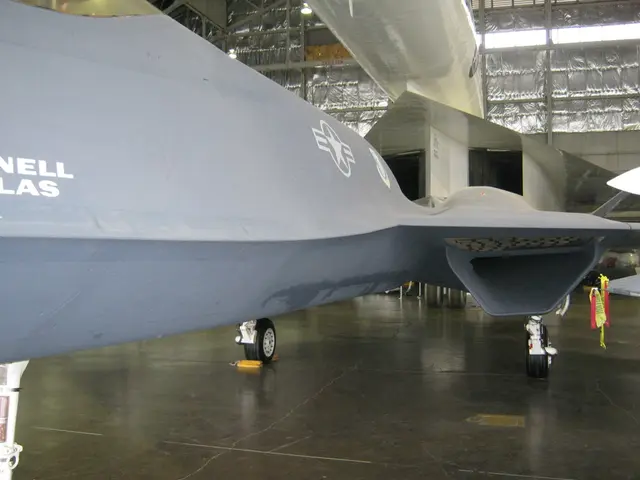A Detailed Overview for Installing Starlink in a Cirrus Aircraft
Ready to revolutionize your Cirrus aircraft's flight experience? With the Starlink Mini satellite internet, you can stay connected like never before! This badass guide will walk you through everything you need to know about installing and using Starlink Mini in your Cirrus, giving you access to weather updates, filing PIREPs, easy communication with ground contacts, and endless entertainment for your passengers.
Get Schooled on Starlink Tech
Starlink represents a huge leap forward in satellite internet technology. Unlike traditional satellite systems that rely on geostationary satellites 19,000 miles above Earth, Starlink's satellite constellation is just 300 miles up. This proximity reduces latency from 600ms to about 25ms and provides download speeds between 25 and 100 Mbps (up to 220 Mbps max)! Since 2019, SpaceX has launched over 7,000 Starlink satellites, providing coverage to over 100 countries. For aviation purposes, the Starlink Mini is the way to go. This compact antenna is about the size of an iPad Pro 13-inch and can be powered via a 40W USB port.
Let's Talk Legality and Compliance
According to Starlink's official guidance, the Starlink Mini can be used as a Portable Electronic Device (PED) in smaller General Aviation aircraft, provided it's kept on the interior of the aircraft. Although the FAA and civil aviation authorities haven't certified the Starlink Mini yet, it can be used according to the FAA Advisory Circular 91.21-1D, "Use of Portable Electronic Devices Aboard Aircraft." Always consult your local Flight Standards District Office (FSDO) to make sure you meet all operational requirements, and remember: it's your responsibility to determine the antenna position and installation that's optimal, safe, and doesn't mess with the operation of the aircraft.
Installation Guidelines
Where's My Satellite Facing?
Properly positioning your Starlink Mini within a Cirrus aircraft is crucial for maintaining strong connectivity. Some suggestions to keep in mind:
- A flat placement with the clearest possible view of the sky is recommended.
- Vertical placement against a cabin window may lead to poor connectivity.
- Performance might be degraded when placed on the cockpit dashboard or under the aircraft's canopy/ceiling window due to window material, deicing technology, and glass angle.
- To optimize the connection, orient it facing north while flying in the Northern Hemisphere and south in the Southern Hemisphere.
While some Cirrus owners have installed Starlink Mini in the baggage area under a window, others have explored more creative solutions like mounting it in a wing tip (though testing is necessary to ensure it doesn't interfere with other systems).
Mounting Options Galore
To ensure a dependable and secure installation of the Starlink Mini in your Cirrus aircraft, it's essential to consider various mounting solutions:
- Suction Cup Mounts: These provide flexibility in positioning and can be attached to windows. Securing the mount against vibrations and temperature changes is crucial, so a support mechanism (like a tacky brace) can help.
- Custom Brackets: These provide a secure and sturdy installation. Some pilots have DIYed custom-designed brackets using existing mounts from luggage netting kits, ensuring that the installation doesn't harm the aircraft's structural integrity.
- Baggage Area and Wing Tip Installations: Placing the Starlink Mini in the baggage area offers a spacious, relatively unobstructed location, but it requires careful testing to ensure no interference with other systems. Wing tip installations need to account for potential obstructions by aircraft components and other antennae.
- CirrusMounts.com Solutions: This resource provides specialized mounting solutions designed specifically for Cirrus aircraft. From adapters for different model generations to innovative mounting systems that fit behind seat panels, they offer a host of options to accommodate various setup preferences.
By selecting the right mounting option and ensuring secure placement, Cirrus operators can maximize the effectiveness and reliability of their Starlink Mini installation, allowing for seamless connectivity in-flight.
Power Requirements: Turn On and Stay On
The Starlink Mini needs approximately 60 watts of power for startup, which exceeds the capacity of standard lighter jacks in Cirrus aircraft. Important considerations to keep in mind:
- The built-in lighter jack in a Cirrus provides only 36 watts (3 amps at 12 volts), which is insufficient for Starlink Mini.
- Aftermarket adapters cannot increase the power capacity of existing lighter jacks.
- For a permanent solution, consider having a dedicated higher-capacity lighter jack installed by a certified mechanic.
- Newer Cirrus aircraft with Mid-Continent TrueBlue high-powered USB-C outlets have enough power (ideally the 2.0 version).
Subscription Plans and Costs: Get Connected!
Starlink offers several subscription plans suitable for aviation use:
Local Priority Plan
- $65 per month ($40 base fee plus $25 for a 50GB data bucket)
- Works at speeds up to 350 mph (suitable for most Cirrus aircraft)
- Functions up to approximately 1-5 miles offshore
- Ideal for most general aviation pilots flying domestically
Global Priority Plan
- Approximately $250 per month
- Works at speeds up to 550 mph (approx. 478 knots)
- Functions over international waters
- Suitable for high-performance aircraft and international operations
As you set up your Starlink, make sure you select a business account and the Local Priority plan. Remember that the standard "Roam" plan will only work up to 100 mph, making it unsuitable for aviation use.
Pro Tips for Using Starlink Efficiently
While it's awesome to have internet access in flight, use it responsibly:
- Flying the aircraft is priority number one.
- Use Starlink to retrieve updated weather information, file PIREPs, and check weather cameras at your destination.
- Limit potentially distracting activities like streaming videos, checking email, or browsing social media while at the controls.
- Set up the Wi-Fi network for passengers to enjoy while you focus on flying.
- Remember that coverage may depend on your location, altitude, and potential obstructions.
Real-Life Starlink Stories
Many Cirrus owners have successfully integrated Starlink into their aircraft, with positive results. One pilot reported consistent connectivity during cross-country flights from Florida to California. Another pilot managed a high-quality Google Hangouts video call while flying at 11,500 feet north of Las Vegas. User experiments have involved a range of mounting solutions: positioning the antenna under the skylight (similar to Trent Palmer's installation in his Kitfox), mounting it in the baggage area, creating custom brackets, and testing wing tip installations.
The Future of In-Flight Connectivity
Starlink continues to expand its satellite network, with thousands more satellites planned for launch in coming years. The service has already demonstrated its commitment to improving access for aviation users through significant price reductions and speed limit increases within its first year of availability to the general aviation market.
Still, many users are hoping for an even smaller "Starlink Tiny" antenna in the future, which would further simplify installation in smaller aircraft like the Cirrus.
Wrapping Up
Installing Starlink Mini in your Cirrus aircraft not only provides an unmatched level of connectivity but also enhances safety through improved access to weather information and offers a ton of convenience and entertainment for both pilots and passengers. While there are some important considerations regarding installation, power requirements, and responsible use, the benefits make it a game-changer for any Cirrus aviator. Time to take your flying experience to new heights!
The Starlink satellite internet represents a significant leap forward for the aviation industry, offering lower latency and faster download speeds compared to traditional geostationary satellite systems. Having launched over 7,000 satellites since 2019, Starlink provides coverage to 100 countries and can be utilized in smaller General Aviation aircraft, such as Cirrus, according to FAA guidelines.
The Starlink Mini, a compact antenna, can be a suitable option for aviation purposes. This device, which is about the size of an iPad Pro 13-inch and can be powered via a 40W USB port, allows users access to weather updates, PIREP filings, communication with ground personnel, and endless entertainment for passengers.
When installing Starlink Mini in a Cirrus aircraft, proper placement is essential for maintaining strong connectivity. Optimal positions include a flat, unobstructed space with a clear view of the sky, away from cabin windows and the cockpit dashboard/ ceiling window.
To securely install the Starlink Mini, various mounting solutions exist, such as suction cup mounts, custom brackets, baggage area, and wing tip installations. It's crucial to consult resources like CirrusMounts.com for specialized mounting solutions tailored to Cirrus aircraft.
Starlink's power requirements exceed the capacity of standard lighter jacks in Cirrus aircraft, so a dedicated higher-capacity lighter jack or TrueBlue high-powered USB-C outlet may be necessary for a permanent solution.
Starlink offers multiple subscription plans appropriate for aviation use, including the Local Priority Plan ($65 per month) and the Global Priority Plan ($250 per month) for international operations.
To optimize the in-flight Starlink experience, pilots are encouraged to prioritize safety during flight, using the internet resources responsibly for weather information, PIREP filings, and passenger entertainment.
Numerous Cirrus owners have successfully integrated Starlink into their aircraft, with many positive reports of consistent connectivity during cross-country flights and high-quality videoconferencing.
As Starlink continues to expand its satellite network, aviation users look forward to potential future improvements, such as a smaller "Starlink Tiny" antenna for simpler installation in smaller aircraft like the Cirrus.
Overall, the integration of Starlink Mini into Cirrus aircraft offers unparalleled levels of connectivity, improving safety through weather updates, enhancing convenience, and providing entertainment for both pilots and passengers.








